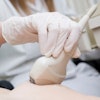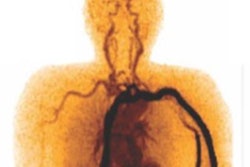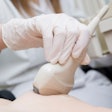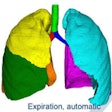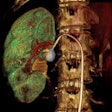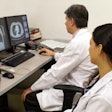
2016 should be a landmark year with respect to the use of radiology clinical decision-support (CDS) systems in Europe. The year will mark the launch of ESR iGuide pilot programs in hospitals in at least five countries. The ESR iGuide is the result of several years of planning and hard work to make integration of best-practice guidelines for the ordering of diagnostic imaging examinations into an electronic CDS system that is designed to be accessed through a computerized physician order-entry (CPOE) system.
The European radiologist who has the most experience with CDS implementation is Dr. Luis Donoso, PhD, director of the imaging department of Hospital Clinic de Barcelona. In late 2013, his hospital launched the first pilot radiology CDS program in Europe. The project began with 80 primary care and general physicians for the orders of musculoskeletal and neurological examinations.
He reported that the hospital is currently completing its first evaluation of two years of use before expanding the system to other physicians and departments. Today, regarding the appropriateness of the requests using the CDS, 88% of the exams were indicated, 5.8% with marginal benefit, and another 5% nonindicated. Interestingly, there has been a 20% increase in MRI requests. Partly because of this, the impact of the CDS in the clinical process is now being analyzed.
Donoso said it is important to understand the reason for the rise in MRI orders and also to determine if the general practitioner physicians who use the CDS are being more effective in reducing the number of visits by patients to specialists.
"It is very important to all users in the process of making radiology CDS adoption a success consider this a 'win-win' situation," he said. "Our project has increased the visibility of general physicians at Hospital Clinic de Barcelona and has stimulated a better and closer relationship with our imaging department. We have succeeded in creating a more efficient workflow for the patient. Everyone involved is invited to be an active participant in the evaluation process to date and the publication of the results that we will soon know."
 The Hospital Clinic de Barcelona is the first hospital in Europe to use an electronic clinical decision-support system interfaced with a computerized physician order-entry system to assist referring physicians in selecting the most appropriate diagnostic imaging exam based on ESR best practice guidelines.
The Hospital Clinic de Barcelona is the first hospital in Europe to use an electronic clinical decision-support system interfaced with a computerized physician order-entry system to assist referring physicians in selecting the most appropriate diagnostic imaging exam based on ESR best practice guidelines.Hospitals in the U.S. were the first to use electronic radiology CDS systems, and their mandatory use by the end of the decade is now federal law. But adoption has been slow, very similar to the pattern of adoption of speech recognition dictation systems and the use of structured report templates. Implementation needs to be very carefully planned, and CDS systems need to be customized to meet the specific needs of a hospital or multihospital enterprise and the physicians who will use the system.
The challenge will be even greater in Europe, believes Dr. Peter Mildenberger, professor of radiology at Mainz University Medical Center in Germany.
As an active member of the ESR iGuide and EuroSafe Imaging programs planning CDS launches in Europe, he explained that healthcare is very different nation by nation in Europe, because healthcare regulation is organized on a national basis. For this reason, there are great differences in the roles of ordering physicians. In the U.K., the general physician has a very central role in the management of patients, including responsibility of cost management, so these physicians might be very accepting of CDS in its context of being a cost-effective use of imaging resources.
"But in Germany, this may be different," added Mildenberger. "Each physician is allowed to order any kind of imaging without much supervisory control and without the need to justify the order. Because radiologists are paid as a fee for service, and because referring physicians are concerned about any recall regarding clinical information before the imaging procedure is done by the radiologist, there is some 'pressure' to do the imaging. Otherwise, the referring physicians will probably send patients to another imaging institution the next time."
Mildenberger thinks that physicians in Europe will consider radiology CDS as valuable and worthy of adoption if the technology can be shown to reduce radiation exposure to patients and improve the quality of patient healthcare. He believes that the climate of a hospital will be a key factor, and that in-house regulation of imaging costs and their distribution to the different stakeholders -- specifically the radiology department versus referring departments -- will also have an impact on adoption.
In some hospital settings where there may be a high communication standard among the different departments, there will be limited room for optimization by a CDS because there is a continuous self-regulation between referrers and radiologists.
"Any hospital planning to implement radiology CDS must visibly demonstrate that the administrators and department chairs and managers accept and promote the project. This is an institutional project. It is not an isolated initiative of the imaging department," said Donoso. "The most difficult and challenging task when implanting CDS is to get the full involvement of the users from the beginning. They need to be involved in the design of the project, the integration process of the CDS into the CPOE, and in the ongoing evaluation process."
Dr. M.G. Myriam Hunink, PhD, professor of radiology and clinical epidemiology at Erasmus University Medical Center in Rotterdam, the Netherlands, agrees. She also expressed the importance of customizing a set of proven unified best-practice guidelines.
"We can use collective knowledge and expertise to establish guidelines but still allow for local differences if there are special circumstances. Academic hospitals can lead this process," she noted. "But it will be necessary for CDS feasibility and cost-effectiveness to be shown prior to widespread implementation."
ESR iGuide welcomes inquiries from hospitals to participate in the multinational pilot project.
Originally published in ECR Today on 3 March 2016.
Copyright © 2016 European Society of Radiology
